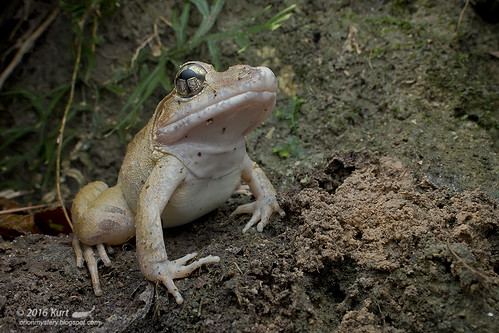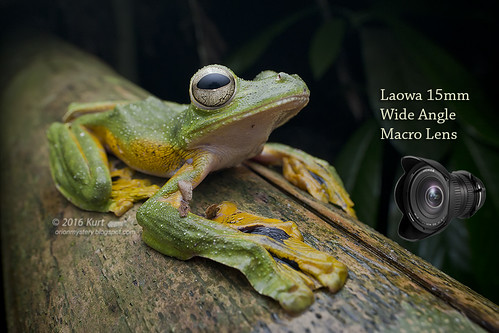
Wallace's Flying Frog (Rhacophorus nigropalmatus)
Laowa 15mm F4 1:1 wide angle macro lens is the first 1:1 wide angle macro lens in the market, and it is still the only wide angle lens in the market that can achieve native life size magnification. A big thank you to Venus Optics for shipping me this lovely lens. I received my Laowa 15mm from Venus Optics back in June, 2015, and have been using it whenever I could!
Just like the Venus 60mm 2:1 macro lens, the Laowa 15mm is a fully manual lens with no automatic diaphragm. An automatic diaphragm keeps the lens wide open for focusing and stop it down to the set aperture only when you fully press the shutter release.
This is not a review of the Laowa 15mm, but more like a sharing of information as well as images taken with this lens. For more information on the Laowa 15mm as well as testimonials/reviews, check out this page.
If you are interested in the Laowa 15mm, you can get one here.
For Venus 60mm F2, you can get it here.
For Macro Twin Flash KX800, get it here.
Working Distance
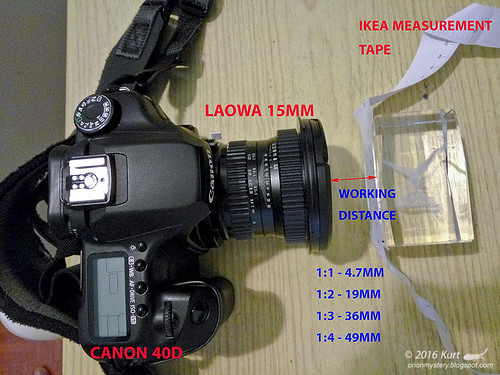
Laowa 15mm - working distances at different magnifications
Here are the working distances at various magnifications:
1:1 - approximately 4.7 mm from front of lens to subject
1:2 - approximately 19 mm from front of lens to subject
1:3 - approximately 36 mm from front of lens to subject
1:4 - approximately 49 mm from front of lens to subject
As you can see from the data above, to fill the frame, even on an APS-C, you will have to be really close to the subject!
Focusing
I experimented with 3 different methods of focusing.
a) Viewfinder, with aperture dialed down to the desired value
As soon as the aperture is dialed down, the viewfinder becomes really dim. Strong focusing light is required. It was tough even on the Venus 60mm, and worse on a wide angle lens like the Laowa 15mm. I have missed too many shots because I didn't nail the focusing! (more info here - look for "Handling").
b) Live view, with aperture dialed down to the desired value.
With live view, and either 5x or 10X zoom, focusing is easier and much more accurate, provided I can keep my hands steady. Not difficult if I am on my knees with my hands/elbows supported. Not easy if I am standing, with nothing to lean on!
c) Viewfinder, focus with aperture wide open!
I can't believe why I didn't try this any sooner. With the aperture wide open, the viewfinder is bright, day or night, as long as I have the focusing light on. (more info here - look for "Handling"). Once I am done with focusing and framing, I will then dial down the aperture all the way to F32, and back up (reverse) a little - without looking or taking my eyes off the viewfinder! The aperture value could be anything from F11 to F22 (?) depending on how "calibrated" my turning is! I have to do all these without affecting the focusing (moving) too much!
Sample images:
Some of my first few images taken with the Laowa 15mm. I had never used a wide angle macro lens prior to that, so be kind! :P
First few images:
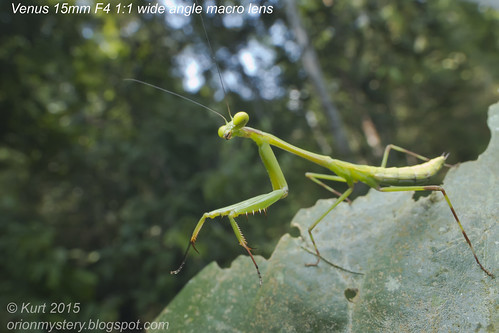
Mantis
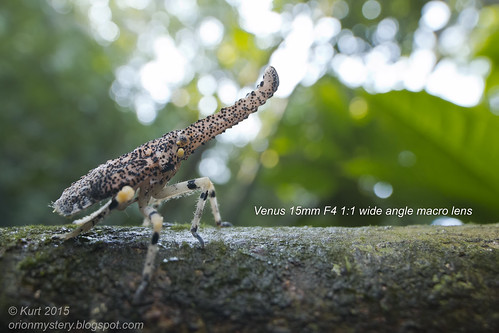
Lantern bug / lanternfly nymph (Zanna terminalis)
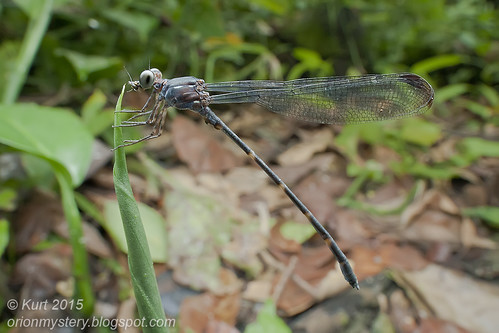
Damselfly (Devadatta argyoide)
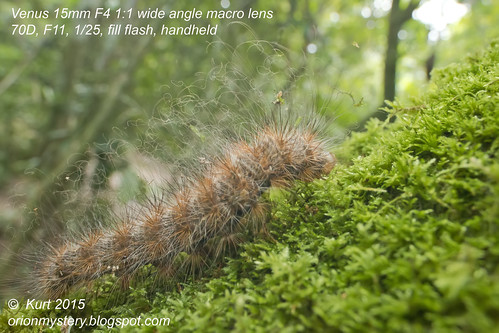
Caterpillar
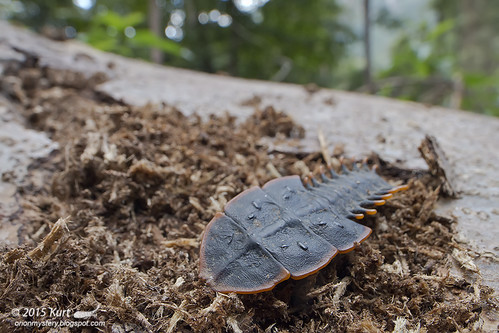
Trilobite beetle (Platerodrilus sp.)

Mushrooms!
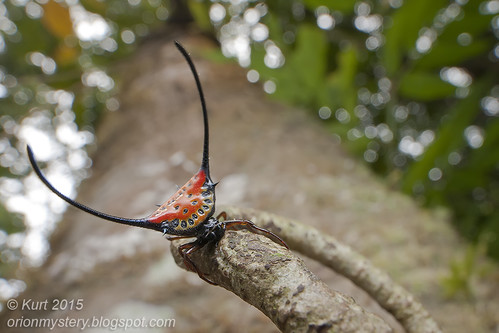
Long-horned Orb Weaver (Macracantha arcuata)
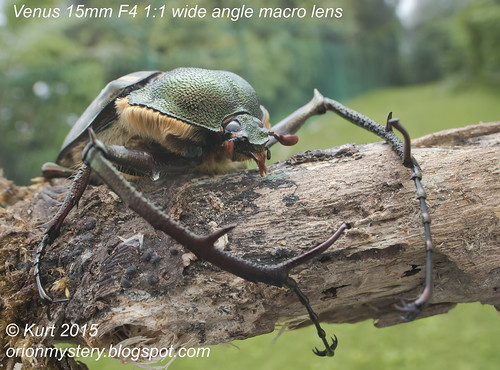
Long-armed Scarab (Cheirotonus peracanus)
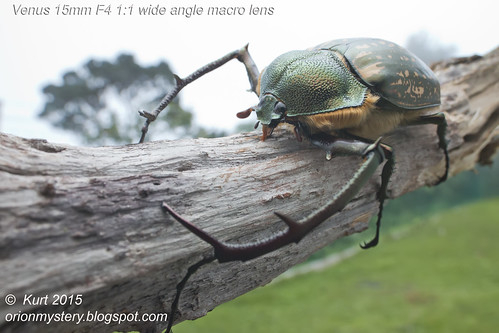
Long-armed Scarab (Cheirotonus peracanus)
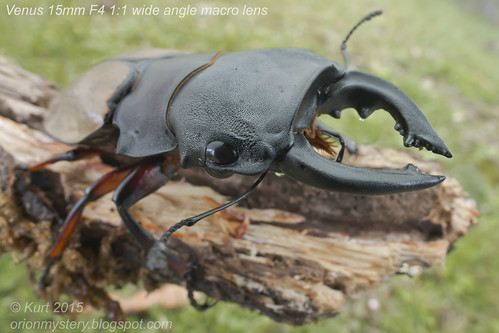
Stag beetle (Odontolabis femoralis)
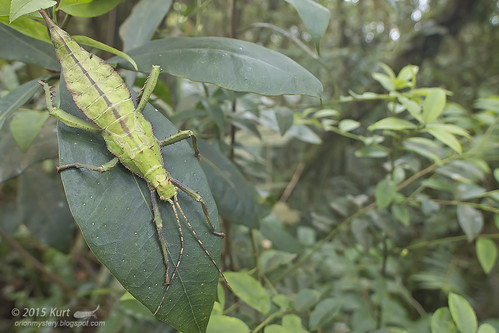
Young female Jungle Nymph (Heteropteryx dilatata)
In the beginning, I used the Laowa 15mm only during the day, either with fill flash, or no flash at all. However, due to the extremely small working distance, finding a willing model during the day was really tough. I actually stopped using the Laowa 15mm because of difficulty in finding a model that would pose for me during the day!
After a few months, I began experimenting with the Laowa 15mm for night macro/herping. A great decision, I must say.
Most images are taken at 1/200, ISO200, F11 to 22(?).
River Toad (Phrynoidis aspera) Study
It was a great decision to try the Laowa 15mm at night. Most my my regular subjects are far less sensitive at night. There is no way I could photograph a Great Anglehead Lizard (Gonocephalus grandis) with the Laowa 15mm during the day! I have also learned a lot more about this lens than I did the first 6 months.
Now a study on a lovely model: River Toad (Phrynoidis aspera). Check out the sequence and let me know which one you like best.
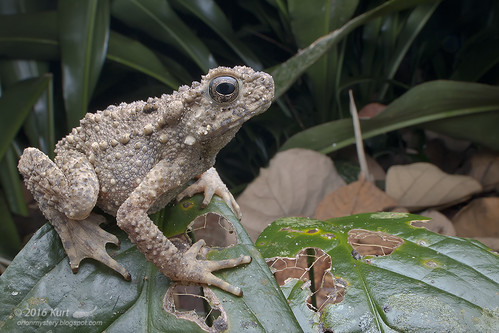
#2
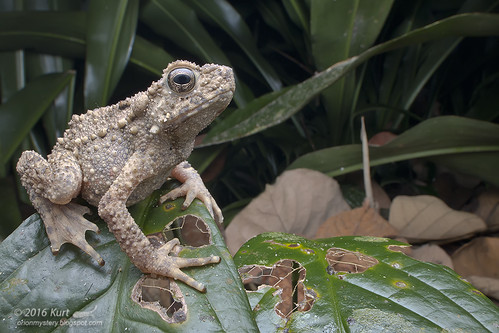
#3
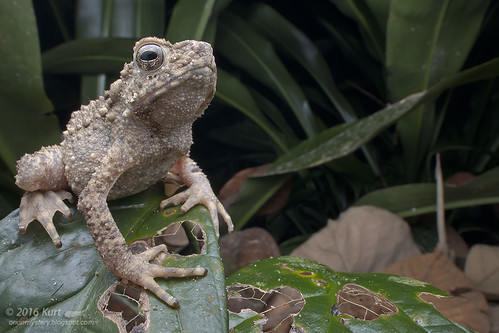
#4
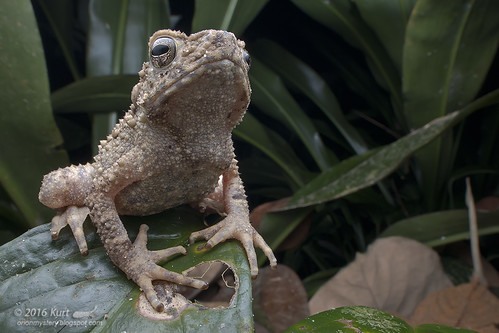
I personally like #3 best, and #2 is close in second place. I call this the "dramatic angle" of wide angle lens!
Newer Images
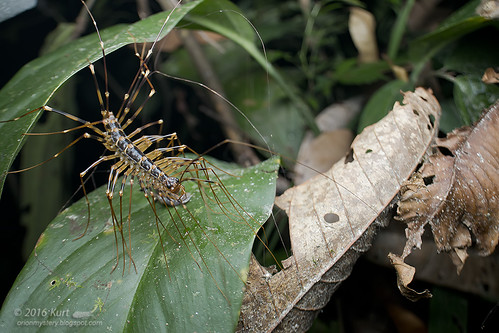
House Centipede (Scutigeridae - Thereuopoda sp.) with a juvenile Malayan Horned Frog (Megophrys nasuta) prey.
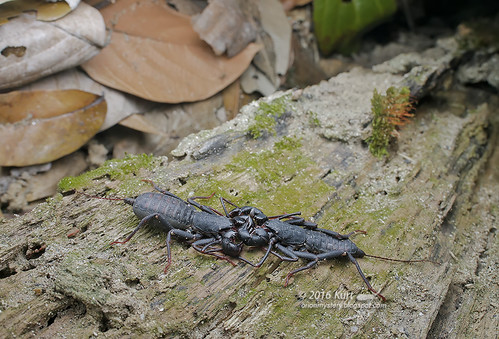
A mating pair of whip scorpion/vinegaroons (Thelyphonus sp.?).
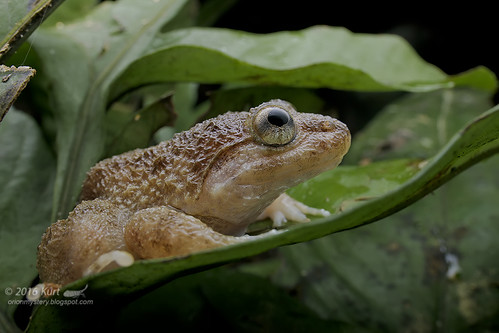
Corrugated Frog (Limnonectes khasianus)
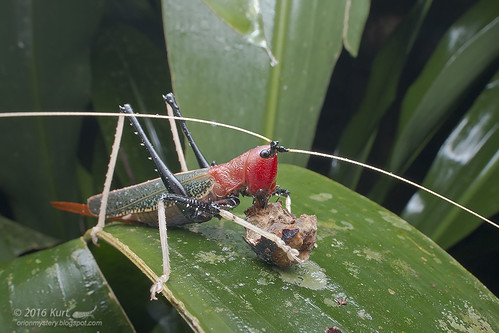
Female Conehead Katydid (Macroxiphus sumatranus)

Female Great Anglehead Lizard (Gonocephalus grandis). There is no way I could get this close to the during the day!
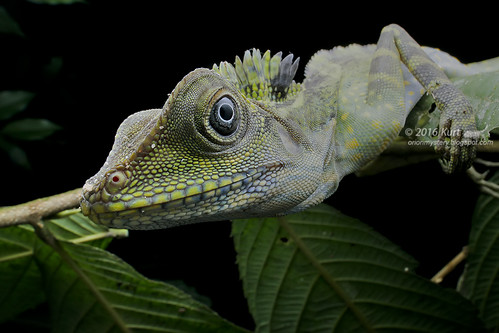
Male Great Anglehead Lizard (Gonocephalus grandis)
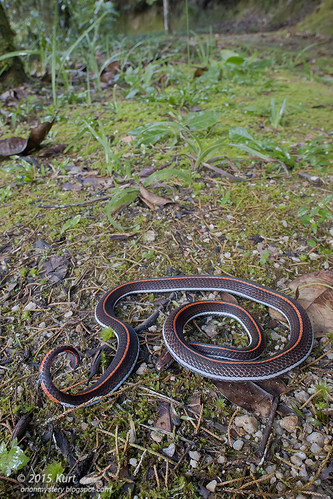
Striped Coral Snake (Calliophis intestinalis)
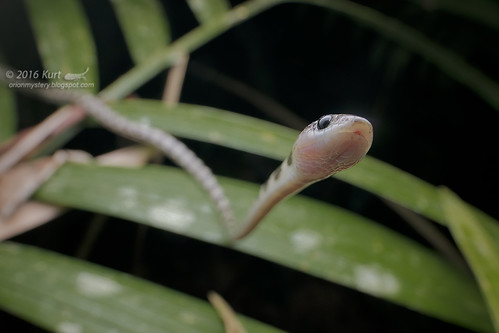
Malayan Bridle Snake (Dryocalamus subannulatus).
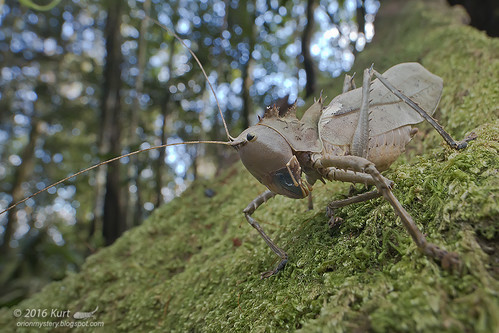
Male Dragon Head Katydid (Lesina sp.)
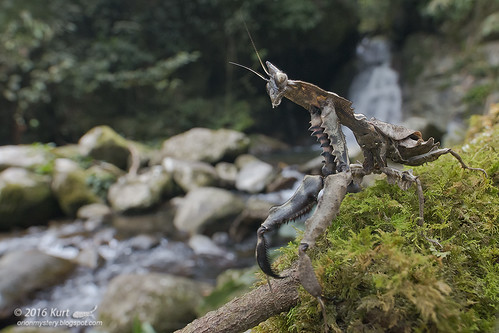
Parablepharis kuhlii kuhlii mantis (ID credit: dracus).
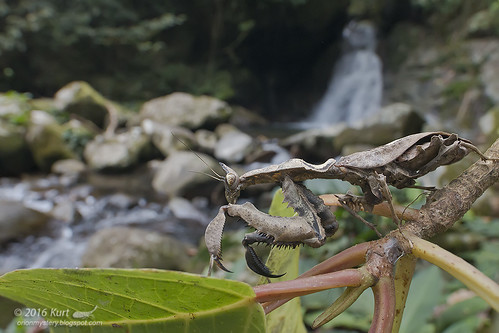
Parablepharis kuhlii kuhlii mantis (ID credit: dracus).
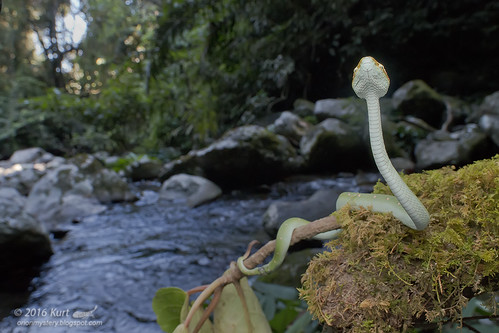
Bornean Keeled Pit Viper (Tropidolaemus subannulatus)

Bornean Keeled Pit Viper (Tropidolaemus subannulatus)
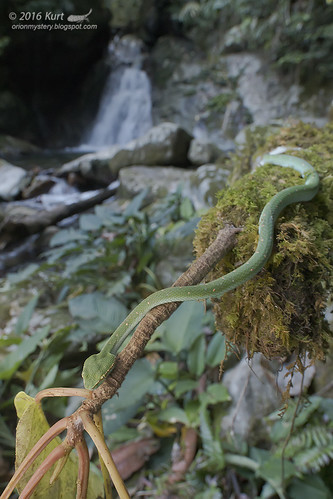
Bornean Keeled Pit Viper (Tropidolaemus subannulatus)
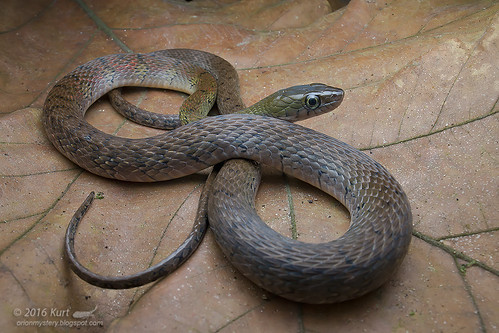
Triangle Keelback (Xenochrophis trianguligerus)
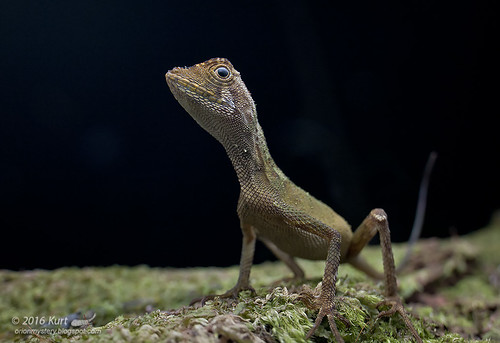
Earless Agamid (Aphaniotis fusca)
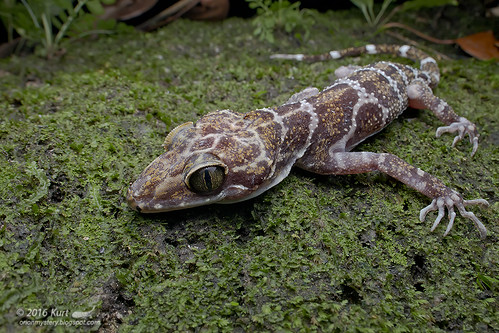
Peters' Bow-fingered Gecko (Cyrtodactylus consobrinus),
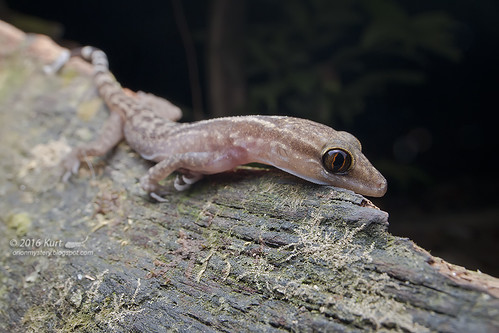
Marbled Bent-toed Gecko (Cyrtodactylus quadrivirgatus)
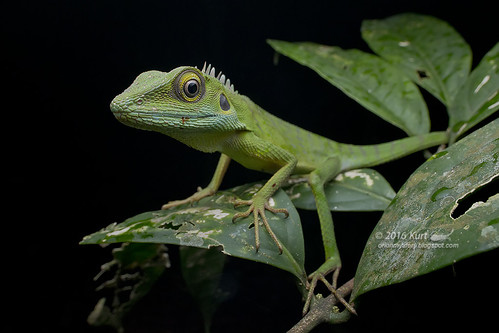
Green Crested Lizard (Bronchocela cristatella)
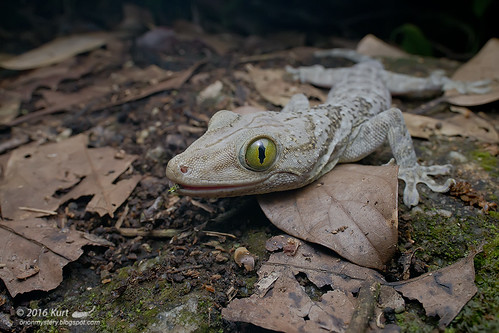
Smith's Gecko / Large Forest Gecko (Gekko smithii)
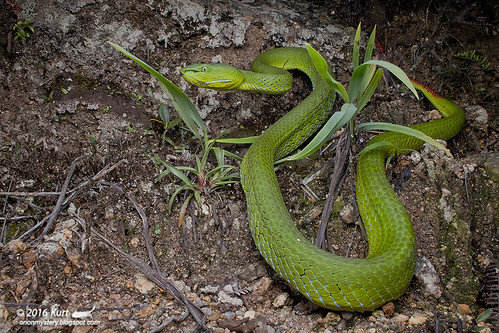
Cameron Highlands Pit Viper (Trimeresurus nebularis)
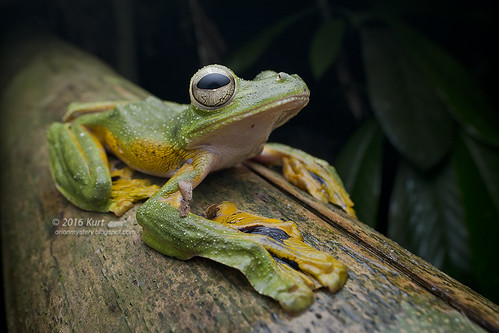
Wallace's Flying Frog (Rhacophorus nigropalmatus)
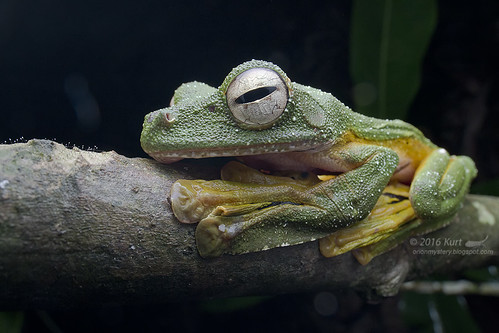
Wallace's Flying Frog (Rhacophorus nigropalmatus)

Norhayati's Flying Frog (Rhacophorus norhayatii)
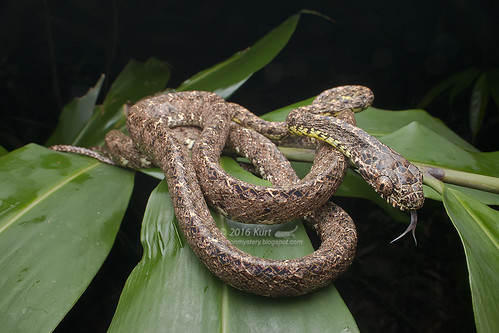
Jasper Cat Snake (Boiga jaspidea)
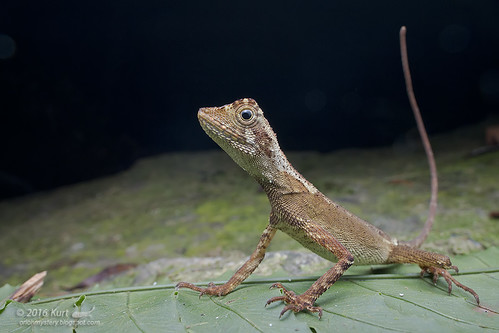
Earless Agamid (Aphaniotis fusca)
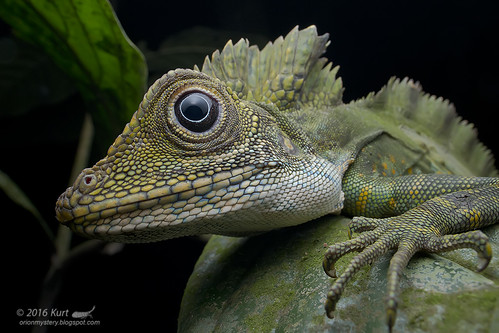
Male Great Anglehead Lizard (Gonocephalus grandis)
My Two Cents
I am sure the big question on your mind now is: how do I like this lens? Well, I like this lens a lot. Despite the fact that it has no automatic diaphragm, it is the only wide angle lens that lets you get to 1:1 magnification! No other wide angle lenses come close to this.
The working distance is extremely small. No matter how careful you are, the lens/diffuser tends to bump into the bushes/perches on which your subject perch on. This applies to all other wide angle lenses though IMO.
Since my speedlite is almost always mounted onto the hotshoe, being close means that I get better light. If I use similar lighting setup for a full body snake shot, one with a 60mm lens, and the other with the Laowa 15mm, the image taken with the 15mm will give me much better light for sure. My current lighting setup is more or less similar to this, but bigger.
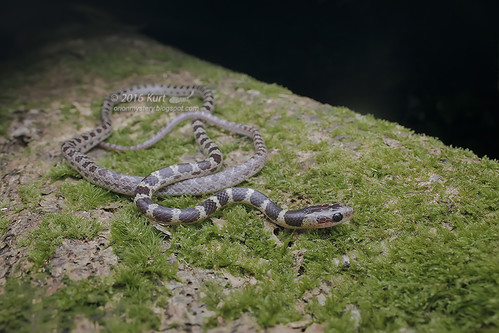
Drycalamus subannulatus, Laowa 15mm - short working distance, resulting in soft light
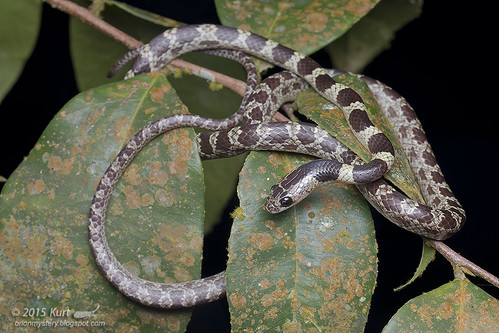
Dryocalamous subannulatus, 60mm macro lens - longer working distance, light not as soft
I am also very fond of the different perspective in the shots I get from the Laowa 15mm.
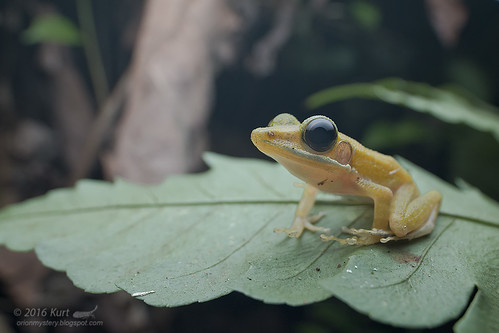
Laowa 15mm
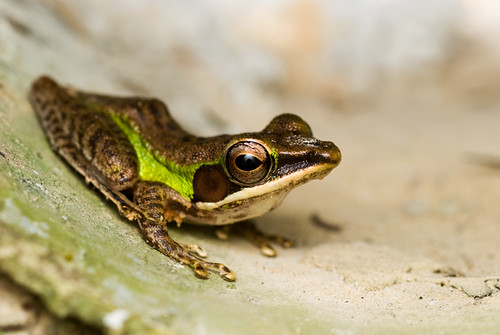
90mm macro lens
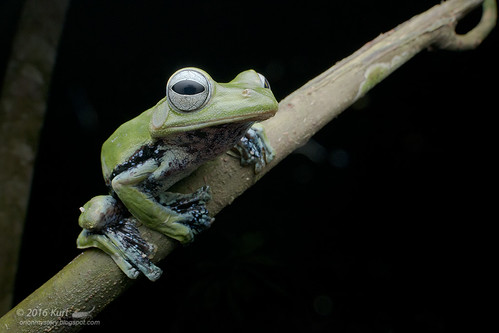
Laowa 15mm, note the bigger, and softer catch light in the eye
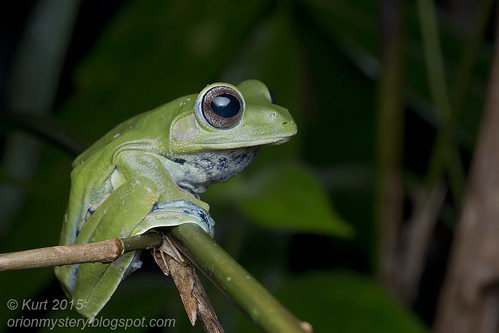
60mm macro lens, note the smaller, relative harsher catch light in the eye
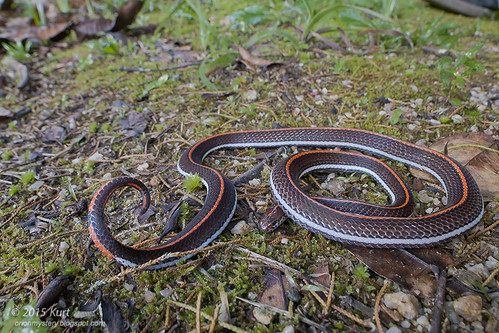
Calliophis intestinalis, Laowa 15mm
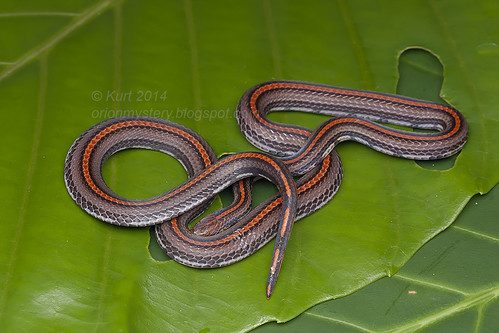
Calliophis intestinalis, 60mm macro lens

Heterometrus spinifer, Laowa 15mm, note the much softer light.
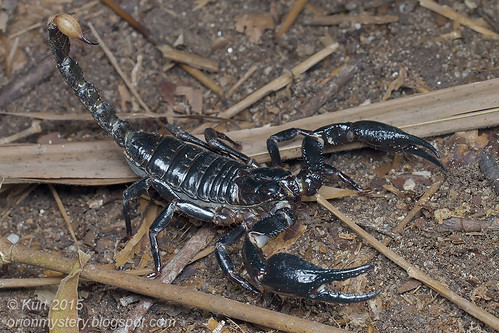
Heterometrus spinifer, 60mm macro lens, harsh light.
With my present lighting setup, however, any magnification higher than 1:3, heavy shadow will occur!
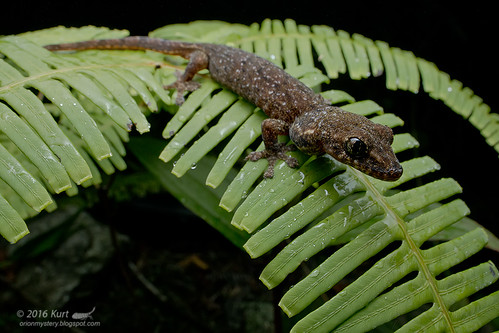
Hemiphyllodactylus titiwangsaensis, heavy shadow towards the front (close to camera)
Another example (worse!)
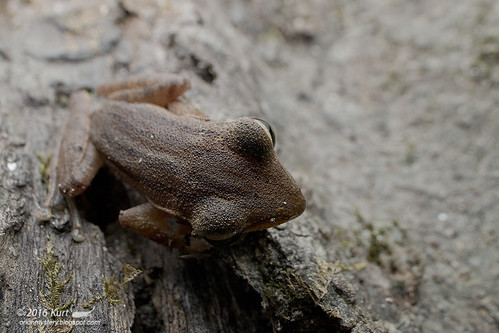
Polypedates leucomystax, more pronounced shadow on the bottom/right side of the frog.
This can be fixed easily by taking the speedlight/diffuser off the camera, but I dislike flash bracket, nor do I have an assistant to hold the speedlite/diffuser for me so I guess I will be sticking to the lower magnifications for the time being.
Other wide angle lenses to consider
A couple of other wide angle lenses that I am also interested in testing out are:
Canon EF 8-15mm f/4L Fisheye USM - this EF lens (works on Full Frame bodies too) has a maximum magnification onf 0.39x!
Tokina 10-17mm F/3.5-4.5 DX
Sigma 24mm f/1.8 EX DG
Canon EF-S 24mm f/2.8 STM Lens
Sigma 15mm f/2.8 EX DG Diagonal Fisheye Lens - available in most mounts. Can achieve a maximum magnification of 0.26X.
- available in most mounts. Can achieve a maximum magnification of 0.26X.
Tamron 20mm f/2.8 Di III OSD M1:2 Lens for Sony Full Frame/APS-C E-Mount capable of up to 0.5x magnification. E-mount only though, for now, at least.
If you are interested in the Laowa 15mm, you can get one here.
For Venus 60mm F2, you can get it here.
For macro twin flash KX800, get it here.
Useful resources for wide angle macro photography:
My take on wide angle macro - Gil Wizen
